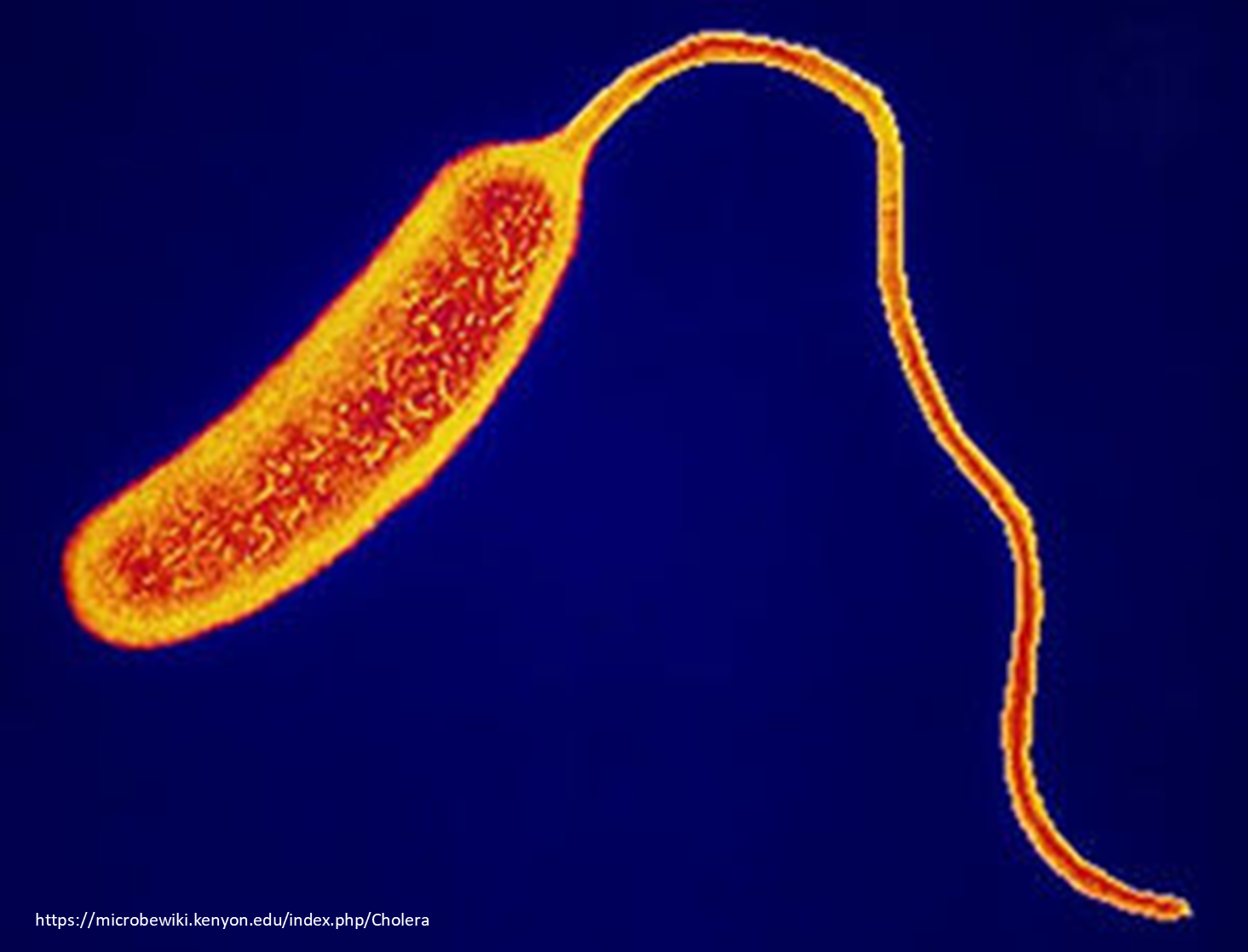
In May of 2018, the Smithsonian Institute honored Henrietta Lacks by placing a portrait of her in the entrance. The portrait is titled the “Mother of Modern Medicine” and it hung in the entry of the museum until November of 2018. Mrs. Lacks never knew it, and her family wasn’t aware of it until much later, but she is responsible of many of our modern medical treatments and research studies.
Continue reading…
I have done some pretty weird things in my life (including eating bugs for this blog), but I am not sure that there is anything quite so bizarre as using your own pee-pee as a health tonic. However, in a video posted recently in the New York Post, Julia Sillaman does just that.
Sillaman claims that drinking her own urine and using it as a face wash has cleared up her acne and helped her lose weight. She also says that fasting has helped her pee taste more like coconut water. Not only is this really a thing that she does (and not a joke or prank), the practice of using urine for health purposes has been around since forever. In this, the third article we’ve had to do about pee, we debunk the inexplicable history of people using urine as a health tonic. (Hint: It does not work.)

The Intergovernmental Panel on Climate Change (IPCC) released a startling report on October 6, 2018 that was a clarion call to the planet. The IPCC’s report warned that if the global temperatures increase by the formerly accepted 1.5 to 2 °C above pre-industrial temperatures, the impacts will be far more devastating than previously projected. In December of 2015, the Paris Accord charged world leaders to keep the global average temperature increase well below 2°C above pre-industrial levels. Since before the industrial revolution, the global temperature has already increased by 0.8°C to 1.2°C, depending on the region.
We are already about halfway to the 2°C tipping mark.Continue reading…

Why are Head Transplants So Darned Hard?
Head transplantation has been considered impossible for many reasons. The first reason is that severing the spinal cord, and then repairing it almost never works. Past attempts with animals typically ended with a paralyzed monkey, mouse or dog. Dr. Canavero argued that he could minimize damage to the cord by using a super-sharp diamond blade to cut the cord. He also claims that he can reconnect the severed cord using a chemical called polyethylene glycol (PEG) and electrical stimulation. Canavero claims that PEG accelerates spinal regeneration and is calling it a “fusogen.” Canavero has insisted that this technique has worked on animals, but there has yet to be any accepted evidence of his claims in peer-reviewed literature.

Keeping the brain alive long enough to connect it to the new body (read: blood source) is also very difficult. The brain will degrade beyond repair in minutes without a blood source. Canavero claims to use a combination of cryogenics and silicone tubing to solve this problem. Again, this is a claim for which little evidence has been presented.
After a transplant surgery, the patient’s immune system will often reject and attack implanted foreign tissue, which is the third major problem for a head transplantation: How does the surgeon keep the donor body’s immune system from rejecting the new head? Transplant patients struggle with this problem even with the most common kinds of transplant surgeries but Canavera says that he has conquered this problem in the same way we battle immune rejection in heart or kidney transplant patients – with a cocktail of immune suppressant drugs.
Is it Ethical to Cut Off a Person’s Head and Sew it on to Another Person’s Body?

In the industry of scientific research, the scientific method is the primary way in which research moves from hypothesis to accepted theory. In a situation like Canavero’s research, a responsible researcher would start with a moderately large sample size of small rodents, such as mice. Canavero says he has performed the surgery on mice. It is uncertain whether or not the surgeries were successful, or how one might even define success in this case. He would perform the experimental procedure, document it in a legitimate scientific publication and subject it to peer review. examine the article and determine if the research is acceptable. Once peer review was established, Canavero might move on to larger animals, probably dogs (yes, I know it’s awful, but that’s another article) and repeat the process. After that work had been accepted, he might move on to non-human primates (monkeys). After monkeys, a responsible researcher might then move on to a human cadaver.
When a researcher is writing these articles, they should include excruciatingly detailed descriptions of their methods along with well-documented explanations of the results. Canavero and his colleagues have not done this. The articles he has published mention methods minimally, if at all. He does assert that the work was “successful,” without much of an explanation of what “successful” means in objective terms. Neurologists around the world have expressed a variety of sentiments about his research, from mere skepticism to stern disapproval. There is no legitimate ethics board that would approve this procedure, considering the lack of evidence and the ethical considerations. Dr James Fildes, NHS principal research scientist at the University Hospital of South Manchester’s Transplant Centre, said: “Unless Canavero or Ren provide real evidence that they can perform a head, or more appropriately, a whole-body transplant on a large animal that recovers sufficient function to improve quality of life, this entire project is morally wrong.”
So, Just What are (some of) Those Ethical Quandaries?
Consideration 1 – Dr Canavero has announced in several venues that his plan is to use head transplantation to help those who can pay for it to achieve immortality. He sees a world in which rich people can buy a new, younger, healthier body, thus live forever. The two procedures central to the research are the GEMINI Spinal Cord Fusion protocol and HEAVEN (Head Anastomosis Venture Project). This is an ethical argument that could fill books. Is immortality ethical, or even sustainable? Is it fair that this would be an option for only the very wealthy? It sort of reminds me of Elysium.

Consideration 2 – In order to do a head transplant, a corpse with an appropriate body needs to be available. According to Organdonor.gov, 20 people die every day waiting for an organ to become available. At a time when wait list for donated organs are months or even years long, how will we handle the supply/demand problem for whole bodies? Is it realistic to donate an entire body for an iffy procedure when those organs can save as many as 8 people on organ donor waiting lists? If were talking about future immortality and wealthy people can live forever, who donates their body? The poor? Prisoners? Clones? It would take another book to even touch on the cloning ethics problems.
Consideration 3 – What kind of hellish scenario would it be for a live human if the head is rejected by the immune system? Currently, the most commonly transplanted organ is the kidney, though we can transplant hearts, lungs, faces, hands, arteries, penises, uteruses, and many other organs with a high likelihood of success. Tissues without a vascular system, such as tendons, cornea, or skin have a much smaller risk of rejection, according to the US Center for Disease Control (CDC). Despite the low likelihood of rejection, it still happens. A head transplant is vastly more complex than any kind of transplant we do currently. Transplantation of organs are typically followed by years of anti-rejection drugs designed to suppress the immune system. This raises the risk of the patient catching an infection that they can’t fight off. The CDC also reports that there is a risk of the transplanted organ having an undetected infection, such as HIV/AIDS, or Hepatitis.

Consideration 4 – Arthur Caplan, a professor of bioethics at New York University’s Langone Medical Center. “biochemical differences between the head and the donor body, the person would probably never be able to regain normal consciousness. “It’s not like putting a light bulb into a new socket,” Caplan said. “If you move the head and the brain, you are putting it into a new chemical environment with new neurological input. I think it would drive the person crazy before they died.” It makes you wonder, how will all of those other person’s hormones and other chemicals change the new brain?
Consideration 5 – To whom will the new combination-body belong? Does the recovering patient become the head or the body? There will be 2 different sets of DNA at play, one from the head, and one from the body. What about identity? While the newly recovering patient has one person’s head, they have another person’s finger prints. What happens to the body’s property, debt, spouse, children? What about the heads personal and legal belongings and family?
This may seem obvious if you think the center of our consciousness is in our brain, but research shows that may not be the case. Much of our behavior and feelings are influenced by our hormones, gut microbiome, and other factors. The enteric nervous system, located in the lining of the gastrointestinal system, is the largest nerve bundle second to the brain, and for this reason the ENS is sometimes called the “second brain.” 95% of our serotonin is found in the ENS. Serotonin is a neurotransmitter that helps reduce depression and anxiety, referred to commonly as a happiness chemical. We don’t know enough about how consciousness, personality, and our feelings really work. We don’t know enough about the ENS or the human microbiome yet to determine where the seat of consciousness is located.

What Do You Think?
In a situation like Spiridonov’s, suffering from Spinal Atrophy Disease, I can see why he might risk death or worse for a chance for a better life. Canavero’s arrogant, self-assured attitude and flashy, circus-like handling of his work would seem to convince a vulnerable person that this procedure was indeed not only possible but inevitable. On the other hand, if a head transplant is possible it represents hope to people with conditions that limit their quality of life. Is it ethical to deny them the procedure because of its Frankenstein-esque qualities? After all, any new surgery might have seemed pretty morbid and risky at one time. Let us know what you think in the comments!

We already eat bugs
In fact, over 2 billion people eat bugs on purpose, though not typically in western culture. There are even cookbooks dedicated to gourmet insect cooking (here is one, if you are curious). But, most folks in the US eat bugs in our “normal” food unwittingly. Cochineal bugs, a kind of insect related to cicadas and aphids, are commonly used to make a red food dye called “carnelian.” If you have a strong stomach, take a look at the United States Food and Drug Administration’s The Food Defect Levels Handbook and you can see just how many bug bits are allowed in foods commonly produced and consumed in the United States.Continue reading…
For example, you may have heard of Vibrio cholerae, the bacterium that causes cholera, a diarrheal disease.

A cholera bacterium. Cute little guy, no?
Cholera kills you via dehydration, but before you go, you will expel vast amounts of liquid poop. Cholera killed at least 143 million people per year during a 26-year period. But what about a viral disease that causes diarrhea? Perhaps you have heard of Norovirus, a virus that spreads when you ingest fecal matter – most people hear about outbreaks on cruise ships. Yeah, I mean that you get Norovirus by eating food or drinking water contaminated with infected poo.

Definitely not.
Many of these kinds of pathogens are spread in contaminated food or water. In fact, the World Health Organization estimates that in developing nations, more than 50% of the people who live in urban areas are eventually affected by diseases related to unsafe drinking water. Poor sanitation, unsafe drinking water, and a warm moist environment, will make many of these buggers super happy and any humans that encounter them super… likely to poop.
Enter climate change. As the planet warms, we can expect that the warm parts of the planet are going to expand outward from the equator, meaning that the climate that our microbe friends enjoy is going to be moving more northerly and southerly. If you were a pathogenic microbe, and you were suddenly able to migrate into new areas – you know, find new stompin’ grounds – wouldn’t you? Especially if your old territory became much too hot for you to survive there. Diseases, like cholera and malaria, that typically live in warm, developing nations could be moving into Europe and the lower part of the United States. However, that doesn’t mean we will all die of dysentery, like in The Oregon Trail.

Oh no!
One important reason we don’t see these diseases in industrialized countries is because we have modern water treatment and sanitation facilities. Industrialized nations also have treatment plans for critters that carry diseases, like ticks or mosquitos.

Moving day.
Water treatment doesn’t always get every pathogenic microbe, but our climate is inhospitable to most of them which helps keep them under control. For now. If that isn’t enough to save us, we have modern medicine. Antibiotics and anti-viral medicines that may not be readily available in poorer nations, but they can be prescribed by your doctor in industrialized nations.
Now let’s head to the icy north. The second of those potential new climate change/pathogenic microbe threats I mentioned at the beginning is the possibility of emerging zombie pathogens. Pathogenic microbes that were frozen in soil and water (or in long-dead carcasses) thousands of years ago could become viable again if the conditions are right. Temperatures are warming at an alarming rate, from one perspective, but from a microbe’s perspective, the temperatures are warming just slowly enough for a gentle thaw. That’s exactly what most pathogenic buggers need to become viable again once exposed to the environment. When an infected human or animal dies and is buried in a cold climate, the ground freezes and layers of sediments, snow and ice are deposited on top of the grave. As the climate warms, the ice and permafrost thaw, releasing any microbes that survived.
In an article from National Public Radio, Zac Peterson described his research, which involved working with perfectly frozen seal carcasses in northern Alaska. The seals thawed into a gooey mess and Zac spent time kneeling in that goo. The knee that was in contact with the goo became red and inflamed. He had contracted a case of seal finger disease, a bacterial infection known to infect seal hunters. Zac had only been working with 800 year old, previously frozen seals. There have also been cases of frozen reindeer dying from anthrax in Siberia and becoming buried in the permafrost. 70 years later, the ice thawed during a heat wave in 2016. The infected reindeer were also able to thaw, decompose, and release the Anthrax spores into the environment. Lot’s of people got sick and one young boy died from the infection.
It sounds pretty dire, but don’t worry! The wonders of modern science and medicine will save us again! Or at least they should. Modern drugs and medical techniques should be able to contain any of pathogens that are viable. Couple that with good hygiene and modern water and sanitation facilities and those nasty buggers don’t stand a chance! Unless the emerging pathogen is something we don’t have an available vaccine or a current treatment for….

Variola Virus – The cause of smallpox
For example, one pathogen known to be in the Siberian tundra is smallpox. Smallpox is caused by the highly contagious variola virus. It hasn’t infected a human since 1979, when the World Health Organization listed it as an eradiated disease. There is worry that, should a viable variola virus find its way from its thawing grave into a warm host, we may not have any defense against it at first. We have not needed to vaccinate people against smallpox in decades, so young populations in many parts of the world don’t have any immunity. People still die from the flu and we distribute vaccines for that virus. If smallpox found its way into a human host, millions of people could die before we are able to get enough people vaccinated to slow the spread.
The possibility of disease-causing microbes migrating into new territory or emerging from their graves in the frozen tundra may sound like a premise of a new outbreak movie, but given that the probable (and currently observable) effects of climate change are dramatic enough on their own, this new problem is sort of like throwing a diseased match on a burning planet. There is cause for concern, but we also have science and human ingenuity on our side. And since we know the threat, there is yet time to defeat it!
References
Climate change and infectious diseases. (n.d.). Retrieved January 30, 2018, from http://www.who.int/globalchange/climate/summary/en/index5.html
Doucleff, M. (2018, January 24). Are There Zombie Viruses In The Thawing Permafrost? Retrieved January 30, 2018, from https://www.npr.org/sections/goatsandsoda/2018/01/24/575974220/are-there-zombie-viruses-in-the-thawing-permafrost
Frequently asked questions and answers on smallpox. (n.d.). Retrieved February 22, 2018, from http://www.who.int/csr/disease/smallpox/faq/en/
Meyer, R. (2017, November 06). The Zombie Diseases of Climate Change. Retrieved January 30, 2018, from https://www.theatlantic.com/science/archive/2017/11/the-zombie-diseases-of-climate-change/544274/
University of Liverpool. (2017, August 2). Europe’s most dangerous pathogens: Climate change increasing risks. ScienceDaily. Retrieved January 30, 2018 from www.sciencedaily.com/releases/2017/08/170802082915.htm
Unsafe drinking-water, sanitation and waste management. (n.d.). Retrieved January 31, 2018, from http://www.who.int/sustainable-development/cities/health-risks/water-sanitation/en/




